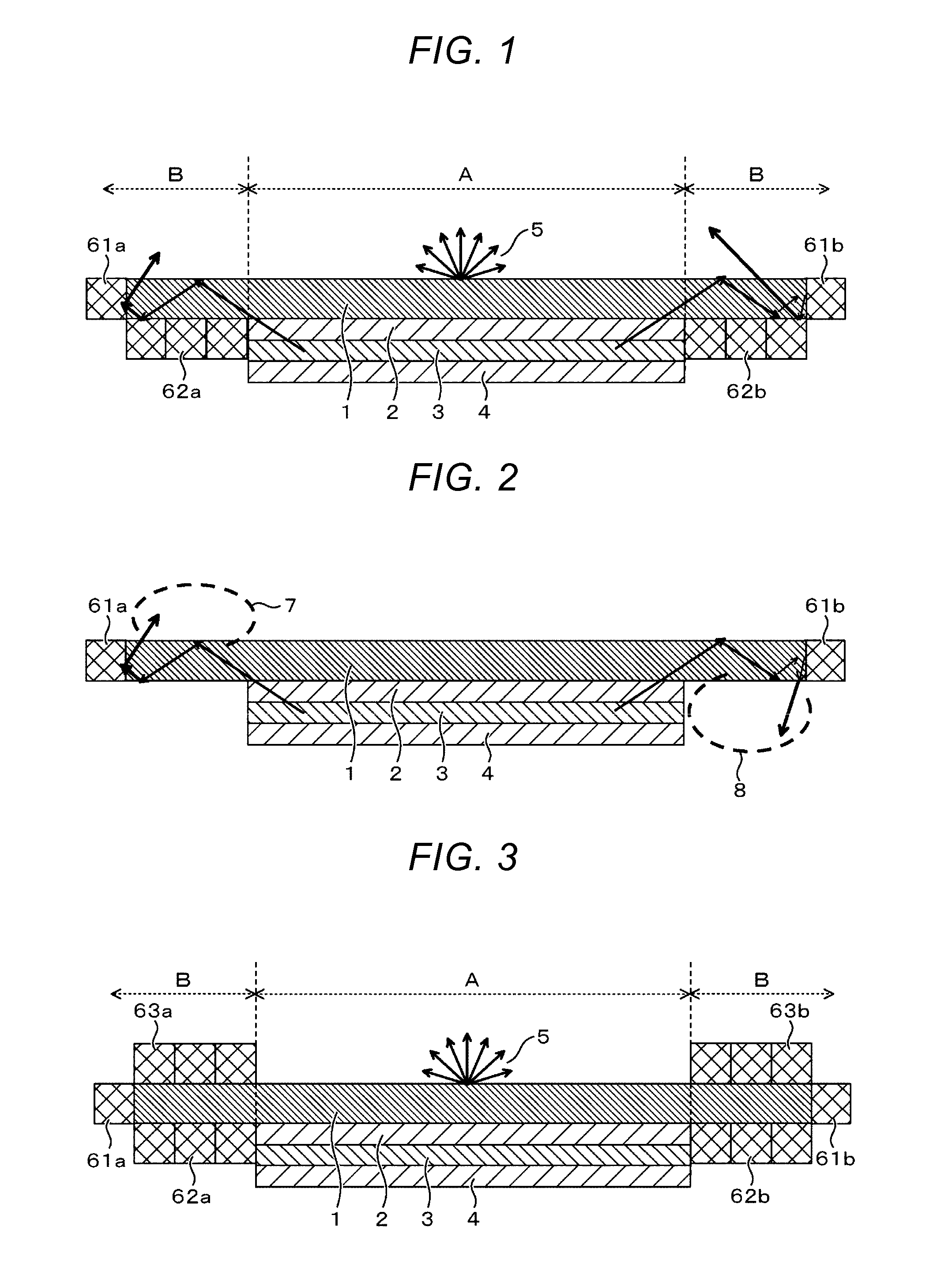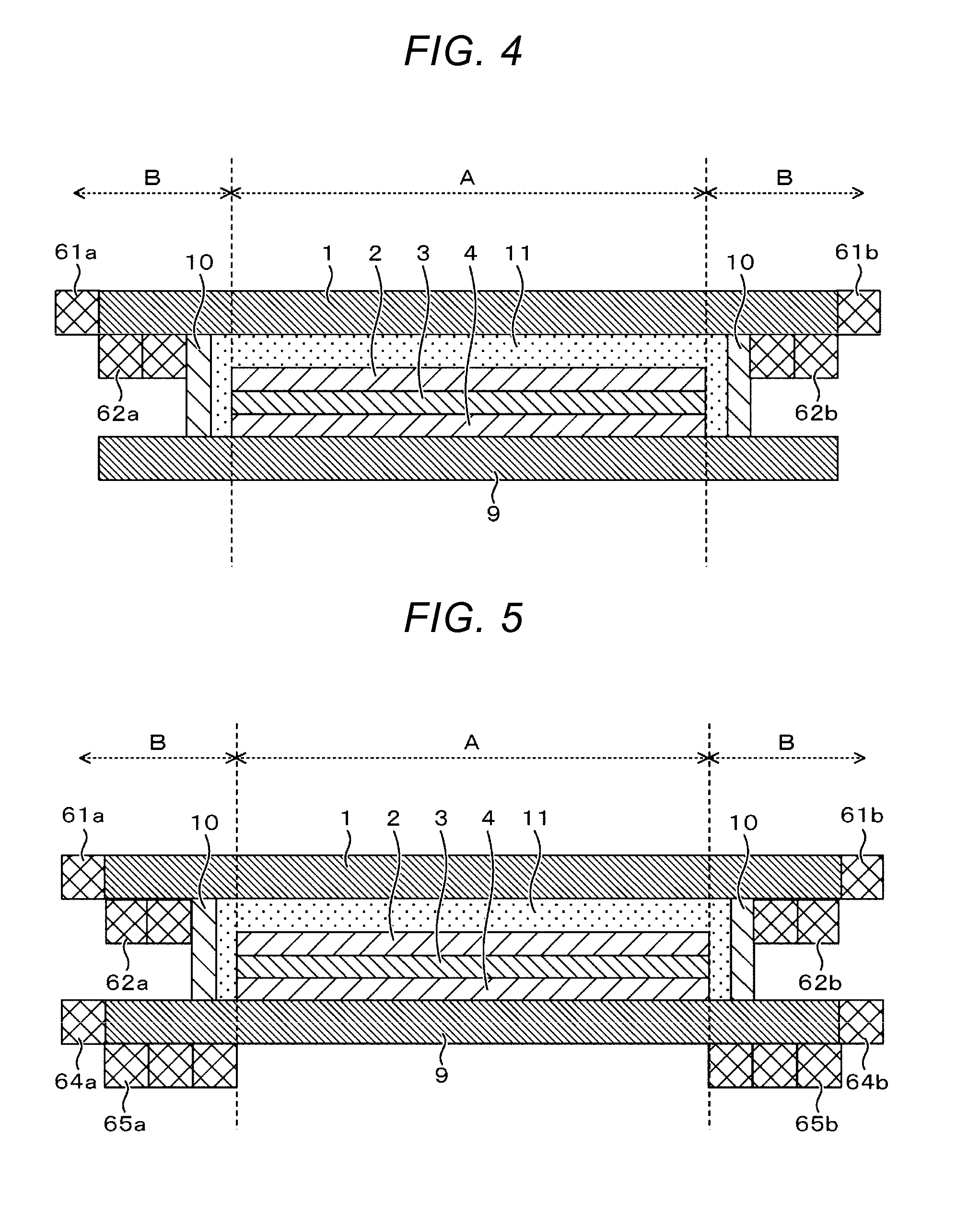Organic light-emitting device
a light-emitting device and organic technology, applied in the direction of thermoelectric device junction materials, semiconductor devices, electrical apparatus, etc., can solve the problems of large reflection loss of light accompanying the propagation of light in the device, the propagate behind the substrate to directly become a loss, and the difficulty in efficiently extracting light trapped in the substrate, etc., to achieve high work function, low ionization potential, and high hole mobility
- Summary
- Abstract
- Description
- Claims
- Application Information
AI Technical Summary
Benefits of technology
Problems solved by technology
Method used
Image
Examples
example 1
[0050]ITO was deposited by sputtering on a front substrate 1 made of glass with a thickness of 1.1 mm. The resulting glass substrate was cut into a 50-mm square, and the ITO was etched into strips with a width of 2 mm, whereby a transparent electrode 2 (anode) was formed. This front substrate 1 having the transparent electrode 2 formed thereon was ultrasonically cleaned for 15 minutes in acetone, pure water, and isopropyl alcohol, followed by drying and UV-ozone cleaning.
[0051]Subsequently, this front substrate 1 having the transparent electrode 2 formed thereon was placed in a vacuum deposition device, and under a reduced pressure of 1.33×10−4 Pa, 4,4′-bis[N-(naphthyl)-N-phenylamino]biphenyl (α-NPD, manufactured by Dojindo Laboratories Co., Ltd.) was deposited to a thickness of 30 nm at a deposition rate of 0.1 to 0.2 nm / s, whereby a hole transport layer was formed on the transparent electrode 2. Then, an organic light-emitting layer 3 was formed on the hole transport layer by lami...
example 2
[0054]A sample corresponding to FIG. 3 was produced by forming diffuse reflectors 63a and 63b in non-light-emitting regions on the light exit surface side of the front substrate 1 of the organic light-emitting device produced in Example 1 using the same material as in Example 1.
example 3
[0055]In place of the front substrate 1 of the organic light-emitting device produced in Example 1, a substrate having a refractive index (nd) at a wavelength of 587.6 nm of 1.6 was used. Specifically, a high-refractive index glass substrate “K-PSK300” manufactured by Sumita Optical Glass Inc. was used. The other configuration was the same as that in Example 1.
PUM
 Login to View More
Login to View More Abstract
Description
Claims
Application Information
 Login to View More
Login to View More - R&D
- Intellectual Property
- Life Sciences
- Materials
- Tech Scout
- Unparalleled Data Quality
- Higher Quality Content
- 60% Fewer Hallucinations
Browse by: Latest US Patents, China's latest patents, Technical Efficacy Thesaurus, Application Domain, Technology Topic, Popular Technical Reports.
© 2025 PatSnap. All rights reserved.Legal|Privacy policy|Modern Slavery Act Transparency Statement|Sitemap|About US| Contact US: help@patsnap.com



